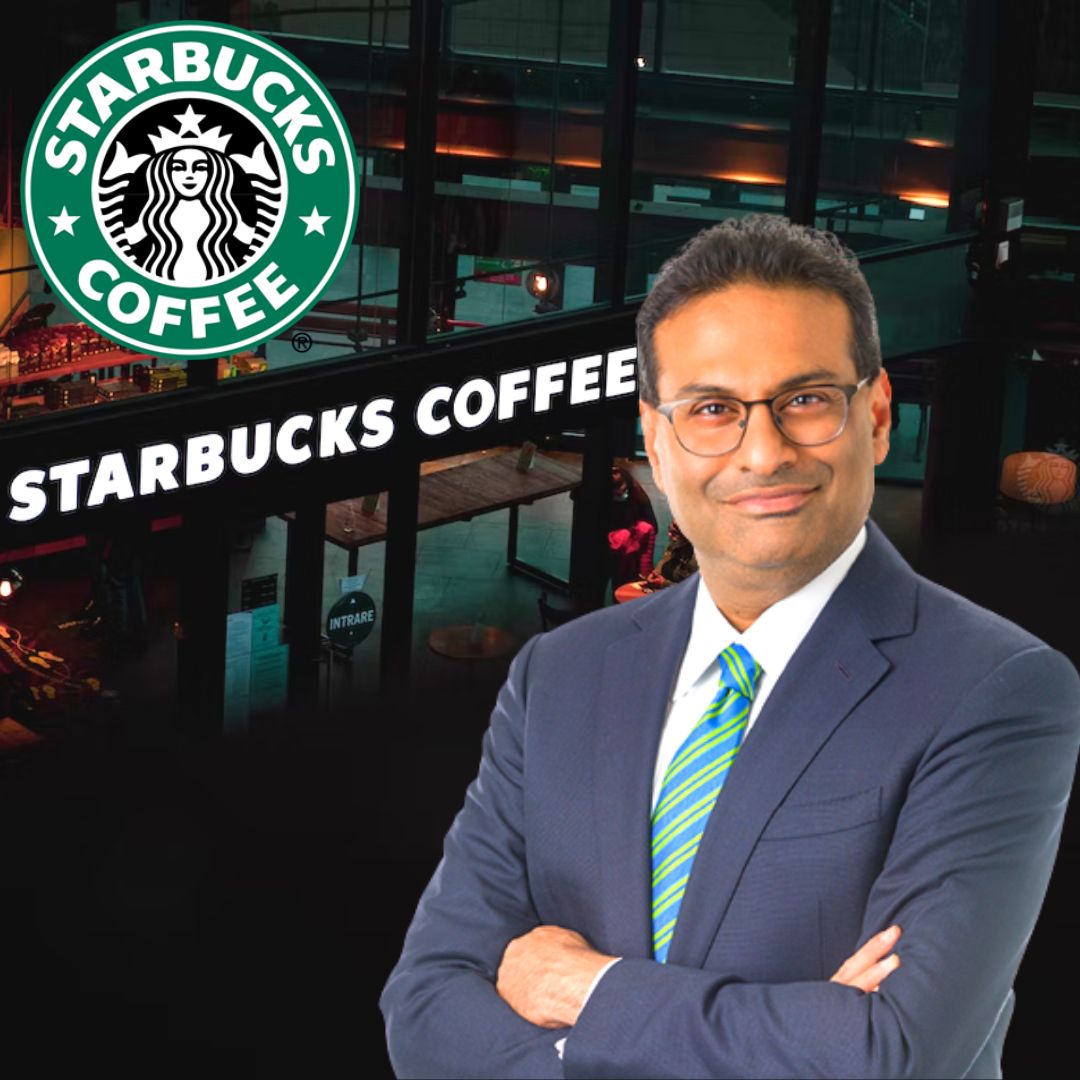Howard Schultz: The Visionary Leader: Ceo Of Starbucks

Howard Schultz, the name synonymous with Starbucks, is a testament to the power of vision and leadership. His journey from humble beginnings to transforming a small Seattle coffee roaster into a global behemoth is a story of entrepreneurial spirit, unwavering commitment, and a profound understanding of the human need for connection.
Early Life and Career
Born in Brooklyn, New York, in 1953, Schultz’s early life was marked by hard work and determination. His father, a truck driver, instilled in him a strong work ethic and the importance of education. Schultz excelled in sports and academics, earning a scholarship to Northern Michigan University, where he played football and graduated with a degree in communications. After college, he joined Xerox, where he quickly rose through the ranks, gaining valuable experience in sales and marketing. In 1982, Schultz’s path intersected with Starbucks, a small coffee roaster with just six stores in Seattle. Intrigued by the company’s unique approach to coffee and its focus on creating a welcoming atmosphere, Schultz joined Starbucks as director of marketing and operations.
Key Contributions to Starbucks’ Success
Schultz’s vision for Starbucks transcended the traditional coffeehouse model. He envisioned a “third place” – a space beyond home and work, where people could gather, connect, and enjoy a high-quality coffee experience. This vision led him to develop a unique brand identity, centered on a commitment to ethically sourced coffee, a warm and inviting atmosphere, and a focus on customer service. Schultz’s strategic moves, such as introducing espresso-based drinks, expanding into new markets, and establishing a strong brand presence, propelled Starbucks’ growth.
Impact of Schultz’s Leadership Style on Company Culture and Brand Image
Schultz’s leadership style was characterized by his passion for Starbucks’ mission, his ability to inspire and empower his team, and his commitment to creating a positive and inclusive work environment. He believed in building a company culture that valued customer service, community engagement, and ethical sourcing practices. This focus on values and culture played a significant role in shaping Starbucks’ brand image as a company that cared about its employees, its customers, and the world around it.
Schultz’s Return as CEO in 2008 and Revitalization of the Company
In 2008, Starbucks faced challenges, including declining sales and a loss of its core values. Schultz returned as CEO, determined to revitalize the company. He implemented a series of strategic initiatives, including streamlining operations, focusing on customer experience, and re-emphasizing Starbucks’ commitment to ethical sourcing and community engagement. These initiatives, coupled with Schultz’s leadership, helped restore Starbucks’ growth and profitability, solidifying its position as a global leader in the coffee industry.
Starbucks’ Business Model and Strategies

Starbucks’ success stems from a meticulously crafted business model that prioritizes customer experience, brand loyalty, and strategic expansion. This model, a blend of operational efficiency, product innovation, and a strong brand identity, has propelled Starbucks to become a global coffeehouse giant.
Starbucks’ Core Business Model
Starbucks’ core business model revolves around providing a premium coffee experience, encompassing not just the beverage itself but also the ambiance, service, and overall customer journey. Its key revenue streams are:
- Coffee and Beverages: Starbucks’ primary revenue source, generating a significant portion of its sales through a wide variety of coffee, tea, and other beverages.
- Food Items: Complementing its beverage offerings, Starbucks offers a selection of pastries, sandwiches, and other food items to enhance the customer experience.
- Merchandise: Starbucks generates revenue through the sale of branded merchandise, including mugs, tumblers, coffee beans, and other accessories.
- Licensing Agreements: Starbucks partners with other businesses to license its brand and products, expanding its reach and generating additional revenue.
Starbucks’ value proposition centers on providing customers with a comfortable and welcoming environment where they can enjoy high-quality coffee and other beverages, connect with others, and engage with the Starbucks brand. This proposition is further enhanced by its commitment to sustainability, ethical sourcing, and community involvement.
Starbucks’ Competitive Advantage
Starbucks’ competitive advantage is multifaceted and stems from its:
- Strong Brand Recognition: Starbucks has built a strong brand identity, synonymous with high-quality coffee and a comfortable atmosphere, creating a loyal customer base.
- Customer Loyalty Programs: Starbucks rewards programs, such as the Starbucks Rewards program, incentivize repeat purchases and build customer loyalty.
- Extensive Store Network: Starbucks has a vast network of stores globally, providing convenient access for customers and maximizing its reach.
- Focus on Customer Experience: Starbucks prioritizes customer service and a positive in-store experience, creating a unique and memorable interaction.
- Product Innovation: Starbucks continuously introduces new beverages and food items, adapting to changing consumer tastes and preferences.
Starbucks differentiates itself by creating a unique customer experience that transcends the simple act of buying coffee. This includes personalized service, a welcoming ambiance, and a focus on providing a sense of community.
Starbucks’ Growth Strategies
Starbucks employs various growth strategies to expand its business and reach new markets. These include:
- Market Expansion: Starbucks actively expands into new markets globally, seeking to increase its footprint and reach new customer segments.
- Product Innovation: Starbucks constantly introduces new beverages, food items, and merchandise, catering to evolving consumer tastes and preferences.
- Digital Transformation: Starbucks embraces digital technologies to enhance customer experience, streamline operations, and drive sales.
- Strategic Partnerships: Starbucks collaborates with other businesses to leverage their strengths and expand its reach.
- Sustainability Initiatives: Starbucks prioritizes sustainability in its operations, sourcing ethically and reducing its environmental impact.
Starbucks’ Adaptability to Evolving Customer Needs and Market Trends
Starbucks has demonstrated a remarkable ability to adapt to changing customer needs and market trends. This includes:
- Mobile Ordering and Payment: Starbucks has embraced mobile ordering and payment, offering customers convenience and speed.
- Personalized Recommendations: Starbucks leverages data analytics to provide personalized recommendations to customers, enhancing their experience.
- Plant-Based Options: Recognizing the growing demand for plant-based options, Starbucks has expanded its menu to include vegan and vegetarian choices.
- Focus on Health and Wellness: Starbucks offers healthier food and beverage options, catering to consumers’ growing focus on health and wellness.
Starbucks’ ability to adapt to evolving customer needs and market trends is crucial to its continued success. By remaining agile and responsive, Starbucks can maintain its competitive advantage and remain relevant in the dynamic coffee market.
Challenges and Opportunities for Starbucks

Starbucks, a global coffee giant, faces a dynamic and ever-evolving business environment. Navigating this landscape requires a strategic understanding of both the challenges and opportunities that lie ahead.
Competition
Competition within the coffee industry is fierce, with numerous established players and emerging brands vying for market share. Starbucks faces competition from both specialty coffee shops like Blue Bottle Coffee and local roasters, as well as fast-food chains and convenience stores offering lower-priced options. The company must continually innovate and differentiate its offerings to maintain its competitive edge.
Economic Fluctuations
Economic downturns can significantly impact consumer spending, potentially affecting Starbucks’ sales. During periods of economic uncertainty, consumers may opt for less expensive coffee alternatives, impacting Starbucks’ revenue. The company must adapt its pricing strategies and product offerings to remain accessible and appealing to customers during these challenging times.
Changing Consumer Preferences
Consumer tastes and preferences are constantly evolving. Starbucks must stay attuned to emerging trends and adapt its offerings accordingly. For example, the growing demand for healthier and more sustainable options has led Starbucks to introduce plant-based milk alternatives and prioritize ethical sourcing practices.
Technological Advancements
The rapid pace of technological advancements presents both challenges and opportunities for Starbucks. The rise of mobile ordering and payment systems has streamlined the customer experience but also increased the need for seamless integration and robust digital infrastructure. Starbucks must embrace new technologies to enhance customer convenience and remain competitive in the digital landscape.
Opportunities for Growth and Expansion
Despite the challenges, Starbucks possesses significant opportunities for growth and expansion. The company can leverage its strong brand recognition and loyal customer base to explore new product categories, expand into new markets, and capitalize on emerging trends.
New Product Categories
Starbucks can explore new product categories beyond coffee, such as tea, cold brew, and other beverages. The company can also expand its food offerings, incorporating healthier and more diverse options to cater to evolving consumer preferences.
Digital Initiatives, Ceo of starbucks
Starbucks can continue to invest in digital initiatives, such as mobile ordering, loyalty programs, and personalized recommendations. These initiatives enhance the customer experience, drive repeat business, and provide valuable data for future product development and marketing strategies.
Sustainability Efforts
Starbucks can further strengthen its commitment to sustainability by implementing environmentally friendly practices across its supply chain. This includes sourcing ethically produced coffee beans, reducing waste, and promoting energy efficiency in its stores. By prioritizing sustainability, Starbucks can appeal to environmentally conscious consumers and enhance its brand image.
Leveraging Brand and Customer Loyalty
Starbucks possesses a strong brand identity and a loyal customer base. The company can leverage this asset to navigate future challenges and capitalize on emerging trends. Starbucks can continue to invest in building relationships with its customers through personalized experiences, community engagement, and social media initiatives.
You know, the CEO of Starbucks has a tough job. They’re basically the coffee king or queen, responsible for making sure everyone in the world has their daily caffeine fix. And they have to keep up with all the latest trends, like the ceo starbucks knows, because let’s be honest, there’s nothing worse than a stale coffee trend.
So yeah, being the CEO of Starbucks is no walk in the park, but at least they get to drink free coffee.
The CEO of Starbucks is probably too busy counting beans (the coffee kind, not the monetary kind) to worry about the CEO of Chipotle and their quest for burrito world domination. After all, who needs a fancy guac when you can have a perfectly frothed latte, right?
Maybe they should just collaborate and create a “Chipotle-tini” – a spicy, creamy, and caffeinated masterpiece that would surely send customers into a frenzy.
